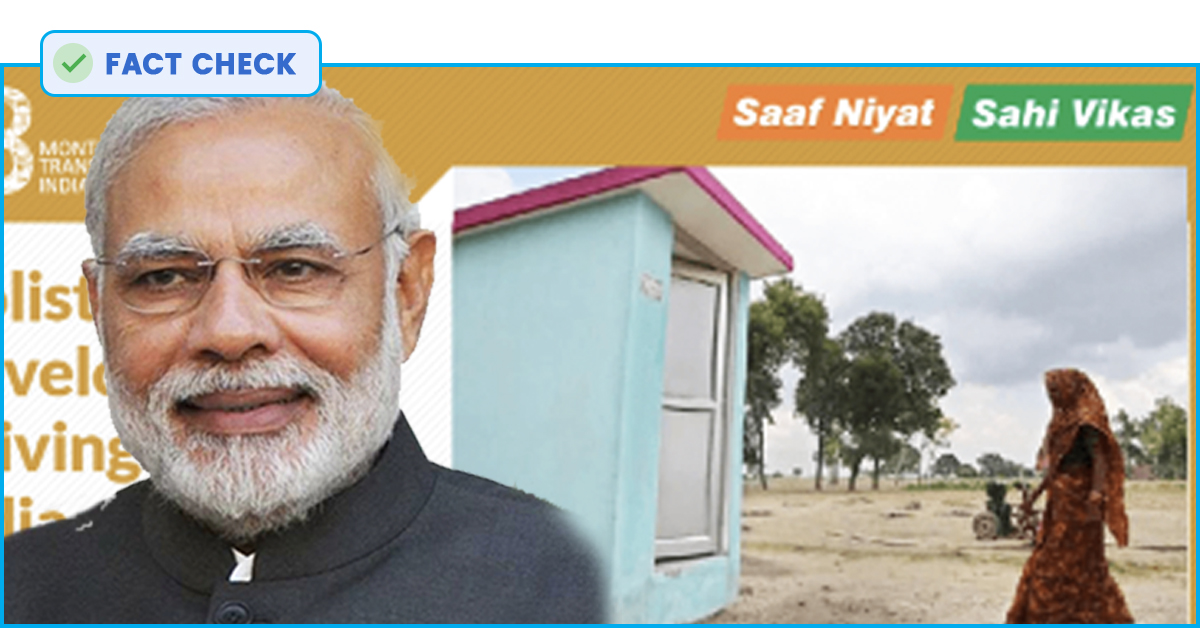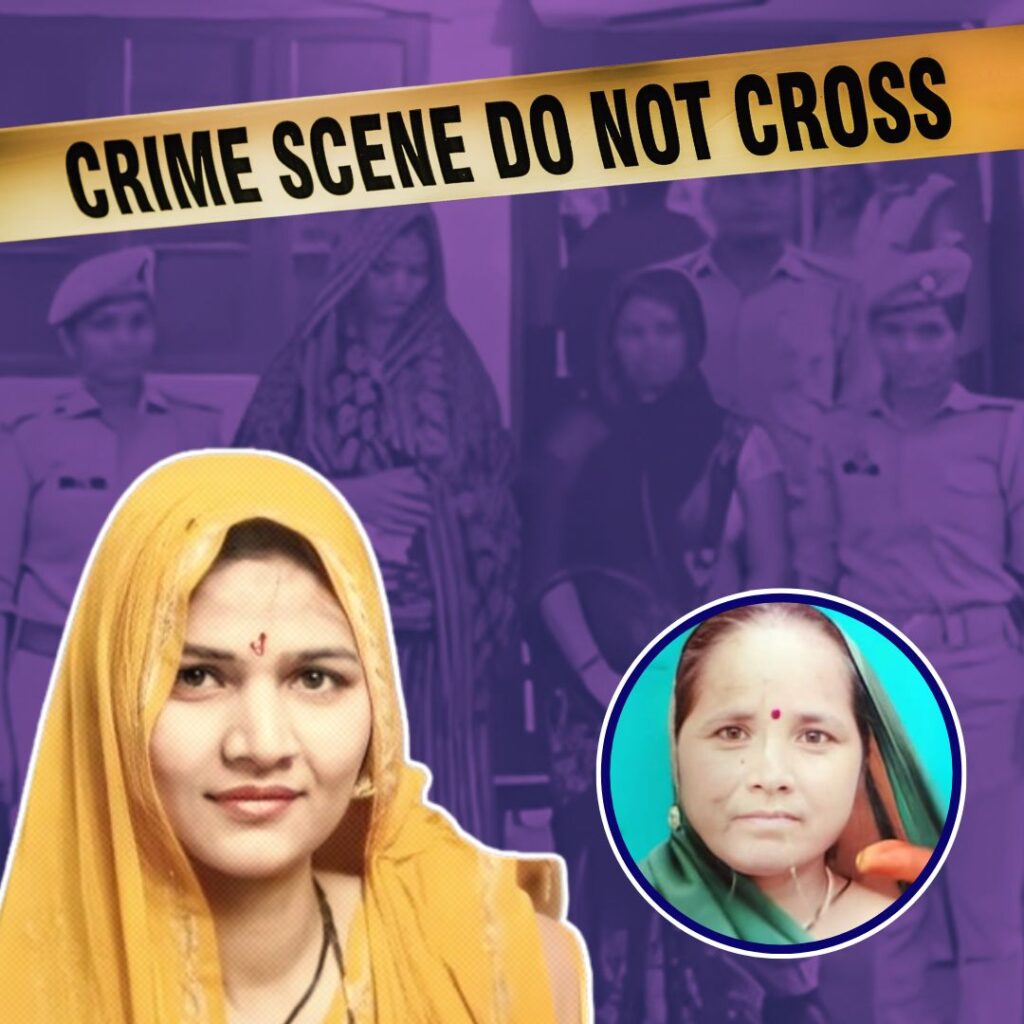‘Holistic development driving rural India’ is an infographic published by the government on the 48-months portal. The infographic contains claims about sanitation, service centres and optical fibre connectivity. Here is a fact check of these claims.

How many toilets have been built in rural areas?
The first claim is that 6.5 crore toilets were built in rural households between the years 1947-2014 and that 7.25 crore toilets have been built between 2014 and 2018.
According to the Swachh Bharat Mission dashboard (SBM), there are 15.13 crore households with toilets. It also states that since the launch of the mission, 8.87 crore individual household toilets (IHHL) have been built. This implies that 6.25 crore toilets existed before the launch of the mission (before 2014). Before the Swachh Bharat Mission, the Nirmal Bharat Abhiyan provided incentives for BPL households to construct IHHLs.
The numbers on the SBM dashboard do not match with the data provided in the annual reports of the Ministry of Drinking Water & Sanitation. As per the Ministry’s 2013-14 annual report, ‘Against a cumulative Project objective under Total Sanitation Campaign (TSC) & Nirmal Bharat Abhiyan (NBA) of 12.57 crore IHHL, States have reported on the Online Monitoring System that, sanitation facilities for 9.45 crore individual households have been achieved as on December 2013.’ In other words, the number mentioned in the annual report is far higher than what is available on the SBM dashboard and the claim made by the government. Even as per various answers provided in the Lok Sabha, the UPA government had built more than 5 crore IHHLs between 2008-09 and 2013-14.
At the same time, it has to be noted that the CAG report released in 2015 made some interesting observations regarding the NBA. The report said that as per Census 2011 (February 2011), 514.64 lakh rural households had toilet facility within the premises. However, as per records in the government, 768.07 lakh toilets were constructed up to February 2011 in rural households under the TSC/NBA scheme. The report also noted that there were wide variations in certain states. Further, the report also highlighted that in 53 districts of eight States where test checks were made, the proportion of defunct toilets was found to be more than 33 per cent (24.03 lakh out of total 71.86 lakh households) due to reasons like poor quality of construction, incomplete structure, non-maintenance, etc.
It is also important to note that the Swachh Bharat Mission is a restructuring of the Nirmal Bharat Abhiyan. According to a press release of September 2014, ‘Efforts of the State Governments for promoting rural sanitation have been supplemented by the Central Government, till 1999 under the centrally sponsored Rural Sanitation Programme (CRSP), from 1999 to 2012 under the Total Sanitation Campaign (TSC) and thereafter under the NBA.’

What is the Sanitation coverage?
The second claim is that sanitation coverage was 38.70% in 2013-14 it is 83.71% in 2014-18. Sanitation coverage is generally defined in terms of households with toilets.
Annual report of the Ministry of Drinking Water and Sanitation for the year 2017-18 states that ‘At the launch of SBM(G) on 2nd October 2014, the sanitation coverage was 38.70%. This has increased to 75.43% as on 31.12.2017. Since the launch of SBM(G), there is 36.73% increase in Sanitation Coverage.’
In response to a question in the Lok Sabha, the government stated that ‘Rural sanitation coverage has increased from 38.7% in October 2014 to 88.4% as of July 2018’.

How many common service centres are there?
The third claim is that there were 83,000 Common Service Centers (CSCs) pre-2014 and that this number has increased to 2.92 lakh post-2014.
As per the government’s official website, ‘Common Service Centres (CSC) scheme is one of the mission mode projects under the Digital India Programme. CSCs are the access points for delivery of essential public utility services, social welfare schemes, healthcare, financial, education and agriculture services, apart from a host of B2C services to citizens in rural and remote areas of the country. It is a pan-India network catering to a regional, geographic, linguistic and cultural diversity of the country. Common Services Centres (CSCs) are being managed by CSC e-Governance Services India Limited (known as Common Services Centre Special Purpose Vehicle- CSC –SPV)’
As per the 2013-14 annual report of the CSC e-Governance Services India Limited, there were over 1.35 lakh operational CSCs across the country.
In the answer provided in the Lok Sabha, the government stated that 2.53 lakh CSCs were established by October 2016 out of which 1.77 lakh were operational. As per another answer provided in the Rajya Sabha in March 2018, there were 1.83 lakh operational CSCs at the Gram Panchayat Level. In another answer provided in the Rajya Sabha, the government stated that there were 64259 CSCs at the Gram Panchayat level in May 2014 and that the number increased to 1.74 lakh in November 2017. The CSC registration website shows that there are 2.56 lakh active CSC IDs as on date.
In other words, the numbers as claimed in the infographic do not match. Even if they were assumed to be operational CSCs in rural areas, the numbers do not match

How many gram panchayats are connected to optical fiber?
The final claim is that gram panchayats connected by optical fiber were 59 between 2011 & 2014 and that the number connected between 2014 & 2018 is 1.15 lakh.
The Bharat Broad Band Network Limited (BBNL) was incorporated in February 2012 with the aim to carry out the business of establishment, management and operation of National Optical Fibre Network (NOFN) and to provide high speed broadband connectivity to all gram panchayats (GPs) by extending optical fiber network and to provide access to bandwidth in a non-discriminatory manner to all eligible service providers. The scheme is not renamed as ‘Bharat Net’.
The 2012-13 annual report of BBNL states that 59-gram panchayats of the pilot blocks have been provided with 100 Mbps bandwidth. This pilot project was undertaken under the UPA. The annual reports of the other years do not contain data about the yearly progress of connectivity to gram panchayats. However, the Bharat Broadband Network Limited website that has been updated in November 2018 shows that 115,988-gram panchayats are service ready.

This story is part of a larger series on the 4-years of the Modi government. This series has been made possible with the flash grant of the International Fact Checking Network (IFCN). Read the rest of the stories in this series here.
Published with the permission from Factly











